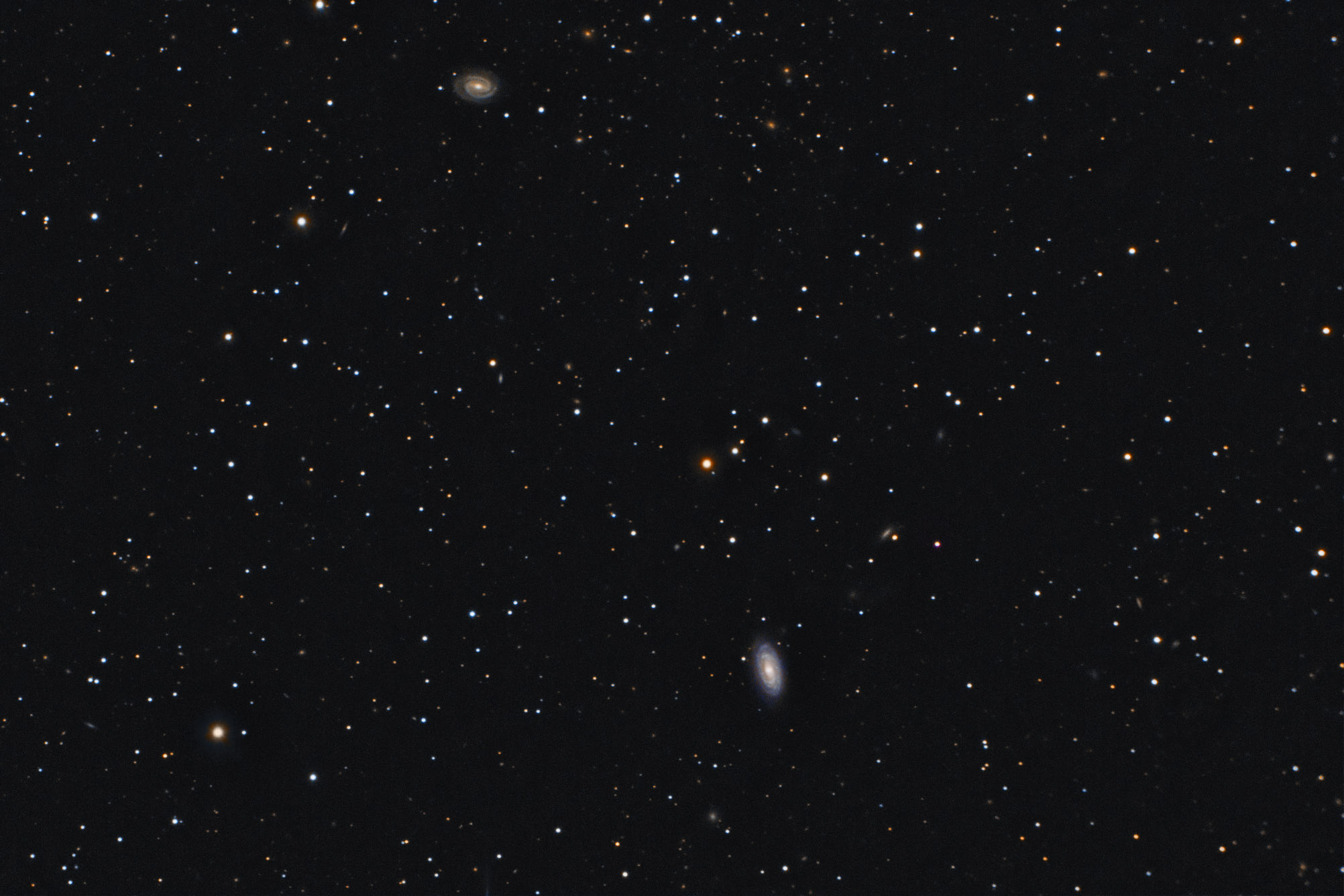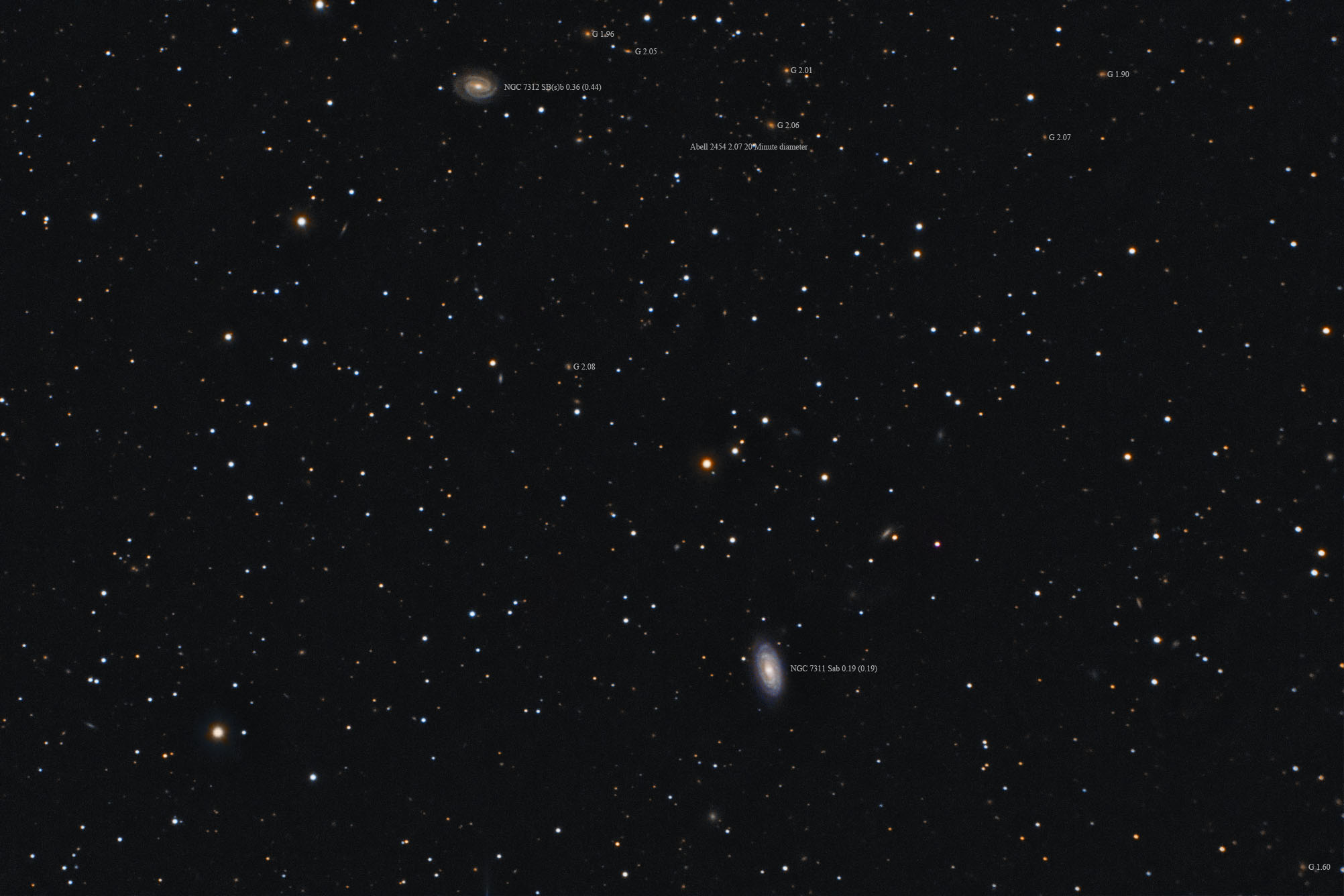| Description | Images |
Object name: NGC7311Designation(s): NGC7311, NGC7312, ABELL2454, NGC 7311 and 7312 are two spiral galaxies seen against the distant galaxy cluster, Abell 2454. The field is "above" the neck of Pegasus the horse that flies upside down in our northern skies. The cluster is about 2 billion light-years distant while the two galaxies are much closer and unrelated to each other. NGC 7311 a blue spiral is only 190 million light-years distant while NGC 7312 is about twice as distant at 360 million light-years by redshift and 440 million light-years by Tully-Fisher measurement. Both appear about the same size in my image but due to distance differences that is only an illusion. I measure NGC 7311 as being about 100,000 light-years across and NGC 7312 as being 163,000 to 200,000 light-years across depending on which distance you use. Related Designation(s):2MASS J22343479+0549025, 2MASX J22340676+0534131, 2MASX J22343478+0549025, ABELL 2454, ABELL2454, CALIFA 886, CGCG 2231.6+0519, CGCG 2232.1+0533, CGCG 404-022, CGCG 404-023, ISOSS J22345+0549, MCG +01-57-009, MCG +01-57-010, NGC 7311, NGC 7312, NGC7311, NGC7312, NSA 149909, NSA 149914, NVSS J223406+053412, NVSS J223434+054909, PGC 069172, PGC 069198, SDSS J223406.79+053413.1, UGC 12080, UGC 12083, UZC J223406.8+053413, UZC J223434.8+054902, ZwCl 2231.9+0530, [MKB2002] J223434.83+054902.2 , [SLK2004] 1794, |

